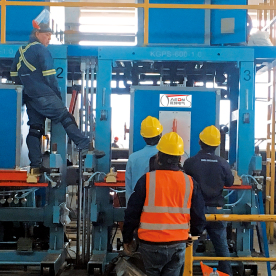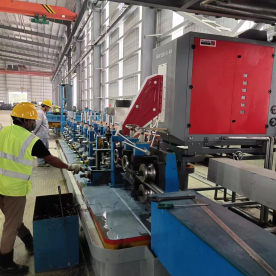
Exploring the Efficiency and Technological Advancements of Automated Pipe Mill Production Lines in the Modern Manufacturing Industry
****

Exploring the Efficiency and Technological Advancements of Automated Pipe Mill Production Lines in the Modern Manufacturing Industry
In recent years, the manufacturing sector has seen significant advancements in technology, particularly with the rise of automation. One area that has greatly benefited from these developments is the pipe production industry, which has embraced the efficiency and precision of automated pipe mill production lines. These sophisticated systems are designed to produce high-quality pipes at a rapid pace, meeting the increasing demand while ensuring consistency and minimizing waste. This article delves into the components, benefits, and future prospects of automated pipe mill production lines.
Understanding Automated Pipe Mill Production Lines
Automated pipe mill production lines are intricate systems composed of various machines and technologies that streamline the process of manufacturing pipes. These production lines typically consist of sections for steel coil preparation, slitting, forming, welding, and finishing. The automation in these lines is achieved through advanced control systems, robotics, and integrated software solutions that enhance overall productivity.
The process begins with loading steel coils, which are then unwound and slitted into narrower strips. Following slitting, these strips are formed into pipe shapes through a series of rollers. The subsequent welding phase is often accomplished using modern techniques such as high-frequency induction welding or laser welding, which offer strong and precise joints. Finally, finishing processes such as trimming, galvanizing, and quality inspection ensure that the pipes meet stringent industry standards.

Exploring the Efficiency and Technological Advancements of Automated Pipe Mill Production Lines in the Modern Manufacturing Industry
Advantages of Automated Pipe Mill Production Lines
1. Enhanced Efficiency
One of the most significant advantages of automated pipe mill production lines is their ability to operate at high speeds without sacrificing quality. Manual processes are prone to delays and errors; however, automation reduces lead times dramatically. A fully automated line can produce thousands of meters of pipe within a day, depending on the specifications and sizes of the required products.
2. Consistent Quality
Automated pipe production eliminates most human errors that can arise in manual processes. Consistency in production is crucial, especially in industries that demand precise specifications, such as oil and gas, construction, and infrastructure. Automated systems utilize advanced sensors and real-time monitoring, ensuring that each product meets the required standards without variations.
3. Cost-Effectiveness
While the initial investment in an automated pipe mill production line may seem significant, the long-term savings are substantial. Reduced labor costs, minimized material wastage, and the ability to produce higher volumes contribute to lower overall production costs. Furthermore, these systems can operate continuously, leading to increased throughput and profitability.
4. Flexibility and Customization
Modern automated pipe mill production lines are equipped with sophisticated software that allows for quick adjustments to production parameters. Manufacturers can easily switch between different pipe sizes and specifications without extensive downtime, offering a high degree of flexibility to cater to varying market demands. This adaptability is essential for maintaining a competitive edge in the ever-evolving manufacturing landscape.
Future Prospects of Automated Pipe Mill Production Lines
As industries continue to embrace the benefits of Industry 4.0, automated pipe mill production lines are poised for further enhancements. The integration of artificial intelligence (AI) and machine learning algorithms can lead to predictive maintenance, helping manufacturers anticipate equipment failures before they occur. Additionally, the incorporation of IoT (Internet of Things) technologies will enable real-time data analysis, allowing for more informed decision-making and process optimization.
Sustainability is another pressing concern that is influencing the development of automated pipe mill production lines. Manufacturers are increasingly seeking ways to reduce their carbon footprint, and innovations such as energy-efficient machinery, waste recovery systems, and the use of eco-friendly materials are becoming prevalent.
Conclusion
Automated pipe mill production lines represent a significant evolution in the manufacturing of pipes, providing unparalleled advantages in efficiency, consistency, and cost-effectiveness. As technology continues to advance, these systems will likely become even more sophisticated, incorporating new strategies for flexibility, sustainability, and operational excellence. Manufacturers who invest in automated solutions are well-positioned to meet the challenges of the future while maintaining high standards of quality and performance in their pipe production operations. The automated pipe mill production line is not just a trend; it is a vital component of modern manufacturing infrastructure that will continue to shape the industry for years to come.Flying saw machine



